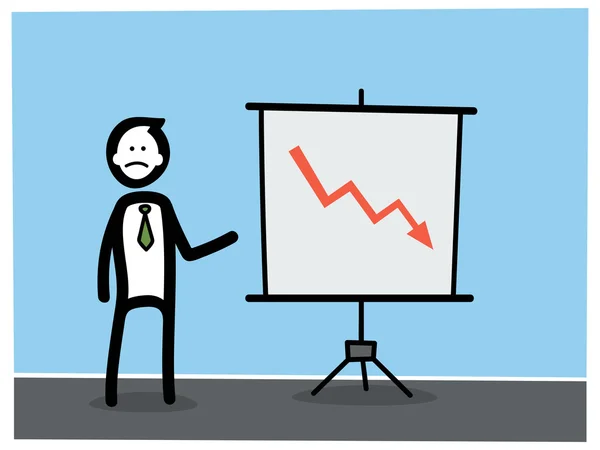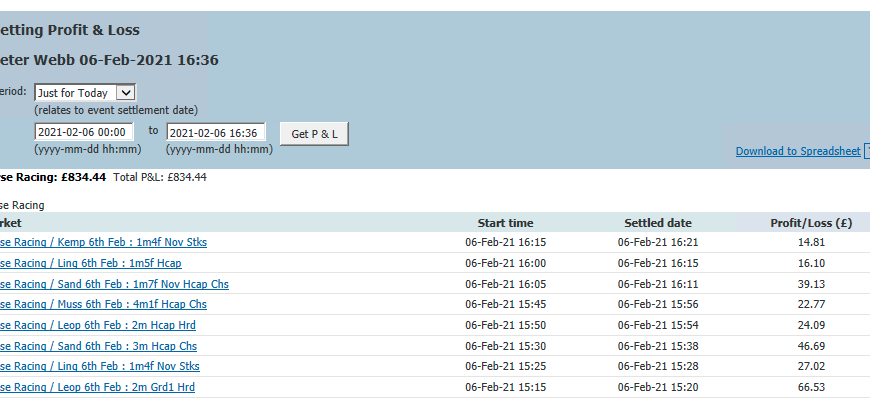Why am I so open about my trading results?
You often see me posting up my Betfair trading results and there’s a very good reason why I do this. It may not be what you think, but it tells you a lot about how I trade and also how I manage losses.
So when I post my Betfair trading results, people generally understand what I’m doing and why I’m doing it. Inevitably, you get a small minority who simply just do not get it. But there are some really clear reasons as to why I do this.
Primarily, I want you to know that I’m still doing this! In an industry dominated by opinion and very little fact, I think it’s really critically important that you have the knowledge that I am sat here on the same software that you were using, clicking away, doing the same sort of stuff.
I’m sharing those big highs and those lows with you, going through the whole experience of emotions.
Now, obviously, my incentive is a bit different from yours, nonetheless, this is absolutely the job that I was made to do. I love every aspect of it and I’m so glad that I ended up in this particular place. So, you see, even without any other incentive, I would still be here doing it.
Through the highs and lows…
Every now and again I’ll post a P&L. Some days I may rip through a card with ease, other days may prove a little harder. But where I think my result is exceptional, I won’t post anything. But there are other days that look ‘ordinary’ to me. Days where classic trading traits, like keeping losses small and keeping your discipline was the key on that particular day.
In the example in this blog that I have used, I have posted somer results and said this is a good example of correct money management. This was because I lost 15 races out of the number of races that I traded.
Now, this wasn’t an exceptional day by any means. If you want an exceptional day, then I can describe that to you as well, but the reason for doing the tweet was actually this was a good example of exactly what your objective is when trading this market in this particular style.
So what I was doing here was I was trading pre-off racing, so I was in the market 5 to 10 minutes out. I was exiting at or about post time and I was in the market for just a small period of time, five to 10 minutes, sometimes a little bit shorter. When I hit that hedge button at or near post time or near the off time, that was the result – Win or lose.
This wasn’t betting, it wasn’t, laying horses or anything like that. This was proper, pure trading.
That’s an important point to make. If you backing, laying or trading in-play your results can be signficantly flattered by the underlying event. If a football team scores more goals than expected, favourites win more often than expected or any of these types of things, then your results will be flattered.
You can produce very flattering P&L’s in this style, but the risk is effectively hidden in losses that are yet due. So you end up with a generally false picture when you post a P&L that is somewhat reliant on the underlying outcome of a sport.
When I trade pre-off, what you see is what you get, there is no reversion to mean. I traded in and out in that small period before the race started and it’s pure profit.
Trading: more reliable then betting
If you do a value bet and you lay a horse at sixes, you’re going to win 83% of the time. If you do that in running and you do a small trade in running, you’re going to win at a much, much higher percentage rate. If you do a small tick trade, you will be almost certain to win. That is until something happens that brings in a loss and it will be a whopper!
This is why I love pre-off horse racing trading because there’s so much of it and it’s a pure trading market. The outcome is not influenced by any other factor. So if you trade this market at random, you will get truly random results.
If we back a horse ten minutes out and then we trade out at post time, you will find that 50% of the time you win money 50% of the time you lose money and you will end up at break-even overall. Thefore the market base rate for pre-off trading is 50%. If you do it completely randomly, you will be getting a 50% strike rate.
When you look at the results that I posted, you will see that if I’ve lost 15 out of 54 races. That makes my actual strike rate 75%. So that contains some information – I am trading at 25 percent above base rate and I am doing something that’s allowing me to pick off those trades and elevate my base rate much higher than random.
So my theoretical edge there is quite large, but because I’m trading. I can’t make thousands on each individual race because I’m only ever going to earn a percentage return on my stake.
So if I have a £500 stake, I’m never going to risk that £500 in the market. The way I’m looking at it on pre-off Racing is I’m going to put £500 in the market, I’m going to take £500 out and I will win or lose a small part of that money.
Even without a 100% strike rate, you will still land a profit by the end of the day
So when you look at those losses, you can obviously tell that those losses must be relatively small in proportion to the gains that I’ve had. Part of that is because the strike rate is quite high anyway, I can afford to have slightly bigger losses than my gains and still make money.
Want to learn more about this topic? Check out this video after reading this blog post! https://youtu.be/kdJMvqOZK8o
Now the most important thing to understand when you’re trading any market, is what is that base rate and how do you measure your success above that?
So you can see I’m winning 75% of races and I’m losing 25% of races, but obviously that puts everything in my favour as long as I don’t let those losses get out of control.
The best way to illustrate this is to explain some I bought in San Francisco recently. I picked up this little device called a Galton board.

What this demonstrates the concept of normal distribution. So, in a way, this is a pre off racing market, because what’s happening is that most of the results will be plus or minus nothing. However, every now and again you can get an exceptional result, either positive or negative.
How do I tackle avoiding losses?

So one of the key ways that I trade is to try and avoid some of those losses.
When I first started trading, what I was actually trying to do was not to make mistakes. That’s where I suggest you start, I looked at the market, could see it was 50/50 and I thought, well, if I do this or if I do that, how does that influence what I trade?
I then went into the market and I traded every market exactly the same. The problem was every now and again, I would get that bell curve on one side where I’d get a very large loss.
My first tip to avoiding a loss!
So my attitude to minimising this problem, was to identify what races that would tend to occur on and then not trade them.
Not getting yourself into that position in the first place is actually a great way of improving your trading. You’re not under the obligation to trade every race! If you turn up to a race and you think, I have no idea what’s going on here, don’t trade it. It’s a brilliant way of avoiding a loss!
When you first start trading, it’s likely that you’ll have one strategy that you’re predominantly using and if you apply applied across all of those races, some of those races, it’s just not going to work very well.
So your first step to move yourself towards profitability is to eliminate races that you don’t understand and are more likely to lead to a loss, then……. don’t trade them.
Not every market is the same – so don’t use the same strategy on all
So here I am saying be selective, but I traded 54 races in a session!
One of the reasons that I can trade 54 races in a session is that I’ve got a strategy for pretty much every market. If I look at the markets on that day I’m thinking, “Well, that’s probably going to work here and that will probably work here”. That’s something that just comes with experience, when you look at my P&L, that’s 20 years worth of experience.
But also let’s look a bit deeper at that. There’s 54 races, £972 in profit and if you divide that profit by 54 races, you’ll end up with an average profit of ‘only’ about £18.
If I said to you, go out and make a thousand pounds today by trading on the racing, you would probably go, how am I going to do that? But if I said to you, your objective is to make an average of £2 a race, that’s much more achievable.
If you made £2 per race on average over 54 races, you would end up with £108 overall. That tiny objective is much more achievable than stretching for a much bigger target.
So one of the things that I’m doing when I’m approaching each of these individual races, is I’m just trying to stay out of trouble, but get a little bit of money out of the market. I could start the day with four losses and then three wins and two losses and then seven wins and then a couple of bigger losses – I don’t care!
I don’t set myself a target and say, right, I’ve got to make a £1000 by the end of the day. How am I going to do that?
That forces you into errors, but if you approach the market in a systematic and structured way, you just chip away at each market. You don’t pay too much attention to what happened in the market before this one, whether it was a loss or a profit. You just chip away and you keep doing what you can.
At the end of the day, you fire up and look at your P&L and you think, oh, that went well!
Your objective is stretched out over all of the races that you’re going to trade. By doing that, then you automatically trade better when the opportunity is there and you trade more defensively for when the opportunity isn’t there.
So if we look at that result and then compare it to the summer, that result would be much larger. Why?
It’s simple, there will be more races, it’s as simple as that. If I did an average of £18 over 70 races or something or even more than that, then obviously, naturally you would get a better result at the end of the day.
Remember: picking opportunities, treating your objective as a broader one is a good way of being able to cope with losses.
Don’t think too much when a position goes wrong
When I’m in a market and a position goes wrong, people often say to me, it would be great if you could show me a losing trade.
I disagree, because what happens is that I go into a market, I try and take a position and it doesn’t work out. So I simply exit it. There is little further thought process.
I went in for a specific reason – it went wrong, I then closed my trade and that’s all I do. I don’t do anything to try and recover the trade because that turns your trade into something completely different. I don’t double up my stakes, I don’t get more aggressive on the next race or anything like that.
It’s just okay that I got that wrong. I open up the next market and carry on. I just trade systematically through the day just like that; I don’t do anything clever.
There are some ways of minimising losses. Like I said to you, pick a strategy the suitable for the market, if you don’t know what you’re doing or you don’t think of a suitable strategy, avoid it. That will minimise your losses.
Additionally, I tend to participate in markets where there’s a lot of liquidity. One of the reasons for doing that is that if there’s a lot of money coming through the market, I can get rid of my trade straight away. I don’t have to think about it.
If you’re in a weak market and there’s no liquidity and you’re trying to exit a position that’s going against you, you just make it much worse for you.
Accept not all markets will be a profit
So if all of the conditions aren’t there for me to do the trade and to be able to exit cleanly, I won’t do it. I just have to accept that that market isn’t going to work.
Ultimately what you’re trying to is exactly what I’ve done with that Galton board.
If you see it on my shelf, it’s actually tipped slightly to one side because that’s how I trade. I’m not looking for some amazing mega trade and waiting all day for it. I’m not doing something to avoid losses, all I’m trying to do is accept that the market is sort of going to be a 50/50 shot.
I’m just trying to tip it gently in my favour by taking slightly better positions and slightly better markets with roughly the right strategy.
It’s fundamentally the same way that I have traded for many years. That was why I posted that information because it gives you a really good example of exactly how good money management should work.
If you don’t let your losses get out of control, then you won’t destroy a lot of the profits that you’ve made on the other side. On this particular day, I didn’t have any significant negatives. If you look back over the last month, I’ve probably had a few races where I’ve lost bit somewhere between £100 and £200, but that’s dwarfed by the trades that have gone particularly well.

If you look at an excellent Saturday result, I can earn thousands over the course of the day. In the example, in the video, it’s near £3000.
How could I possibly achieve that? Well, it was Champion’s Day. It has got much bigger markets, much more liquidity, bigger targets to hit in terms of the size of the race and how much they stood out from the rest of the card. So naturally, my results would rise, but I didn’t post that P&L because that was the benefit of twenty years worth of experience. I wouldn’t expect somebody to be able to do that or on the same scale.
By and large, what you’re trying to do is accumulate a profit over a period of time. You’re not looking to do anything weird or special in order to get to that total. That’s primarily why I highlighted my ‘normal’ P&L, because I thought it was a good example of that.
Checklist to minimise losses
So let’s summarise how to minimise losses: –
- Don’t set a target: It’s going to go up or down over the course of the year based upon a number of races and the quality of races. You’re just trying to do the best you can in the markets that you’ve chosen and that will allow you to build a better result.
- Make sure that you pick and choose markets that are suitable for your strategy. if you’re starting out, you’ll find if you’re using one particular type of strategy, it may work better on some markets than others, so just avoid them. Not all races will need the same strategy.
- Choosing a race will high liquidity means that you can exit that trade as a minimal loss or the smallest loss that you possibly can
- You need to accept that losses will happen: you have to be able to say – I have made a mistake and I am getting out of there. Don’t try and fix it, move to the next market with a fresh start.
That is the way that I suggest you trade and hopefully looking at that P&L that you saw, that will give you some confidence and reassurance that that’s exactly how I trade and something that you should aim to replicate.
That’s primarily one of the key reasons for making a post like that is to make you realise I act just your average trader. I hope that and the advice I’ve given here will positively influence your trading going forward.


Open and frank, I find Peter’s logic very sound and sustainable. It just make sense.
Thank you for taking the time to leave that comment.